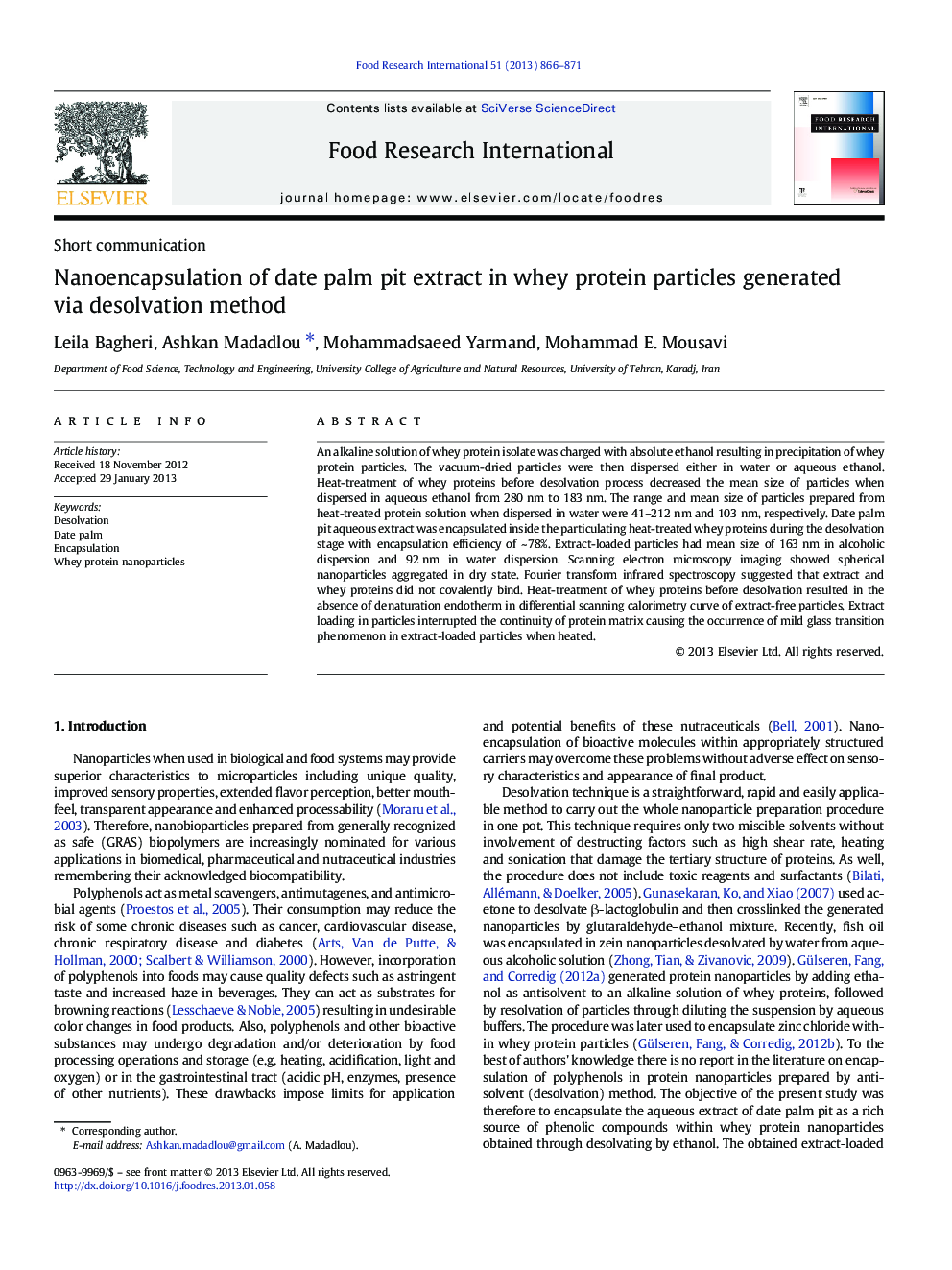| Article ID | Journal | Published Year | Pages | File Type |
|---|---|---|---|---|
| 6398150 | Food Research International | 2013 | 6 Pages |
An alkaline solution of whey protein isolate was charged with absolute ethanol resulting in precipitation of whey protein particles. The vacuum-dried particles were then dispersed either in water or aqueous ethanol. Heat-treatment of whey proteins before desolvation process decreased the mean size of particles when dispersed in aqueous ethanol from 280Â nm to 183Â nm. The range and mean size of particles prepared from heat-treated protein solution when dispersed in water were 41-212Â nm and 103Â nm, respectively. Date palm pit aqueous extract was encapsulated inside the particulating heat-treated whey proteins during the desolvation stage with encapsulation efficiency of ~Â 78%. Extract-loaded particles had mean size of 163Â nm in alcoholic dispersion and 92Â nm in water dispersion. Scanning electron microscopy imaging showed spherical nanoparticles aggregated in dry state. Fourier transform infrared spectroscopy suggested that extract and whey proteins did not covalently bind. Heat-treatment of whey proteins before desolvation resulted in the absence of denaturation endotherm in differential scanning calorimetry curve of extract-free particles. Extract loading in particles interrupted the continuity of protein matrix causing the occurrence of mild glass transition phenomenon in extract-loaded particles when heated.
⺠Protein nanoparticles were generated by adding absolute ethanol to WPI solution. ⺠Date palm pit extract was encapsulated in protein particles during their desolvation. ⺠FTIR spectra suggested the noncovalent entrapment of extract in protein matrix.
